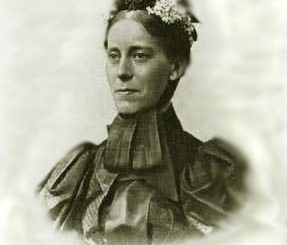Holy Cross and St Mary Church , Quainton
Dating from the 14th century, the parish church of St Mary the Virgin and Holy Cross was reputedly involved in a strange experience in the late 17th century. The incident involved Susanna (nee Brawne) (died circa 1671) and her husband Sir John Dormer of Lee Grange (died Leghorn (Livorno) 1675), who are interred in the church. According to ‘Haunted Churches’ (1939) by Elliott O’Donnell (27 February 1872 – 8 May 1965), ‘There is in Quainton church, Buckinghamshire, a very quaint epitaph to the memory of a member of the ancient family of Dormer. It reads thus : “The virtuous and religious Susanna, Lady Dormer, who most piously left this transitory life the 24th day of February, Anno Domini 1671.”
 And concerning this same Susanna, Lady Dormer, there is the following tradition. After her death her husband, Sir John Dormer, went on a visit to Leghorn in Italy, and, soon after his arrival there, he was harrowed night after night by a vivid dream in which he saw his dead wife floating on water. Every feature of her face, the face he had loved so much, was portrayed with a reality which was ghastly and appalling in the extreme. After going through the nerve-racking ordeal for three or four nights in succession he yielded to a sudden impulse and returned home, in order to see if there was anything wrong with the family vault in Quainton church.
And concerning this same Susanna, Lady Dormer, there is the following tradition. After her death her husband, Sir John Dormer, went on a visit to Leghorn in Italy, and, soon after his arrival there, he was harrowed night after night by a vivid dream in which he saw his dead wife floating on water. Every feature of her face, the face he had loved so much, was portrayed with a reality which was ghastly and appalling in the extreme. After going through the nerve-racking ordeal for three or four nights in succession he yielded to a sudden impulse and returned home, in order to see if there was anything wrong with the family vault in Quainton church.
There, in company with the sexton and other local people, he entered the vault and found it flooded, and the coffin of his wife floating on the water. Greatly impressed and firmly convinced his dream had been sent to him by the Unknown, he had the vault repaired and his wife’s coffin replaced in its original position. It is somewhat significant, in view of the dream, that he did not long survive his wife and was buried next to her in the Dormer family vault.
According to Mr. Lipscombe, the Buckinghamshire historian, when the vault was opened, about a hundred years after Sir John Dormer’s death, the outer wooden coffin of Susanna, Lady Dormer, was found to be greatly decayed, as though it had been subjected to great damp, while the inner leaden coffin and both coffins of Sir John were found to be intact.
In Mr. Lipscombe’s opinion the damp may have been due to the soil, which is of a tenacious clay.
He does not, however, pooh-pooh the pregoing story and catalogue it as a mere fable or legend, but says, ” It is wild enough but not altogether improbable.” Possibly he was acquainted with the local rumour that strange unaccountable happenings have, from time to time, occurred both in the church itself and in the churchyard.




Recent Comments